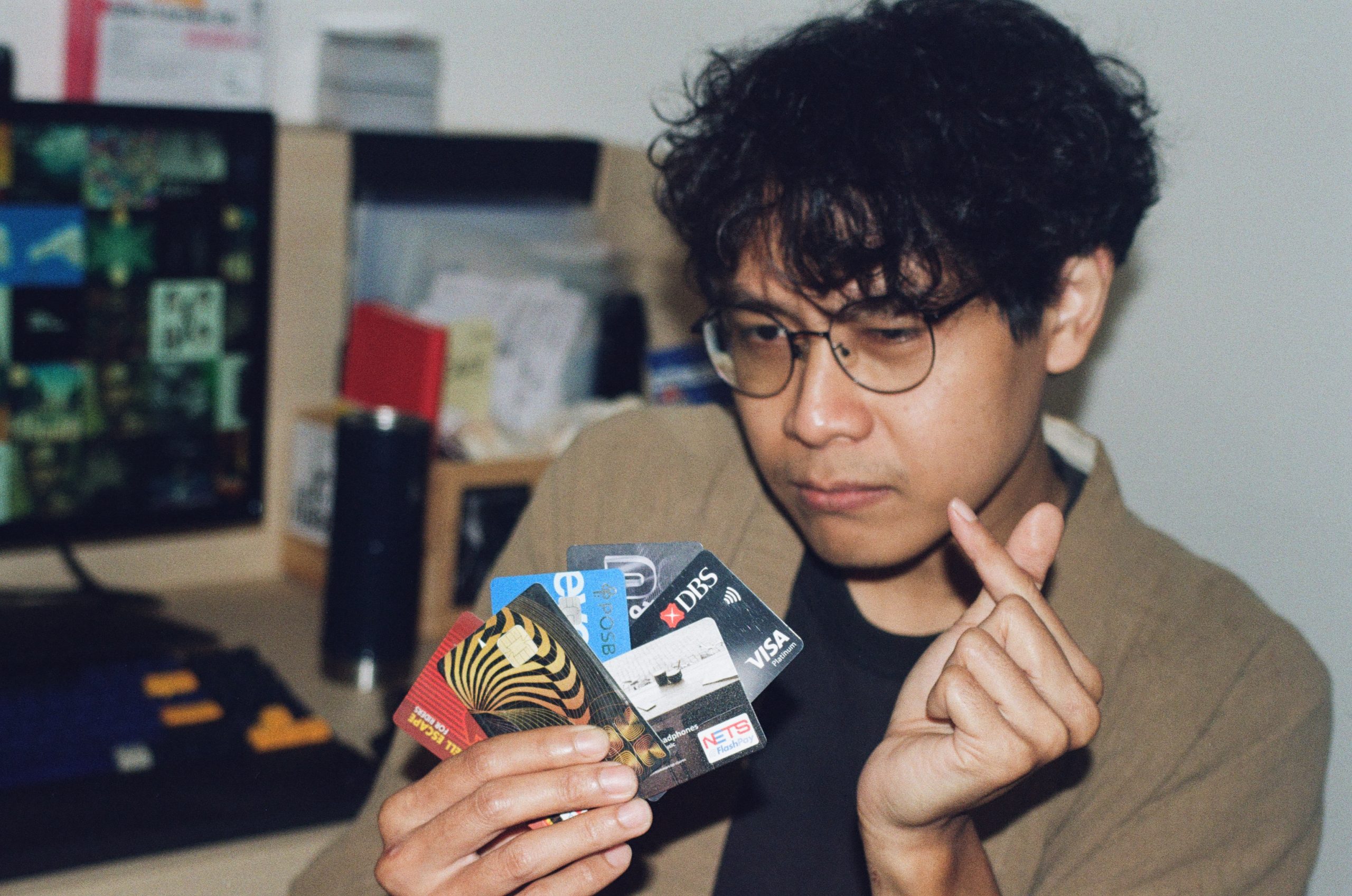All images by Zachary Tang for RICE Media
As a semi-geriatric millennial, allow me to implore all you Gen Z kids to get off my Instagram feed. Stop disrupting the zen vibe of my perfectly manicured grid — the one that I have spent years matching hues and adding white borders to posts — with photo dumps filled with unfocused photos, internet memes I don’t get, and a spirit of spontaneous chaos that I lack.
Congratulations on being young! Have fun before your mortal body starts betraying you at every opportunity. I can’t remember exactly when I began emitting a little “oof” every time I sit down, but it’s not recent.
Before you reach the age where your Google search history is filled with definitions of new lingos and slang, I would like to implore you: please know how to handle your finances in your 20s. It would be very cash money (that’s still in use, right?) of you.
Take it from a millennial who bought enough avocado toasts and houseplants to pay for a resale HDB flat in Queenstown. I’ve learned the hard way that all the TED Talk and Gary Vee hustle videos on YouTube can’t prepare you enough for the reality of not having enough money to juggle medical bills, mortgages and marriage. Let alone a New Yorker subscription that you only signed up for just to get their tote bag.
Credit Karma

Hands down, contactless tap-to-pay systems are the best thing since Discmans (FYI: small portable music machines that can only play one album at a time using circular plastic discs).
But just like how we can quickly lose sight of time while debating with our parents on why we don’t want kids, we can just as easily lose track of all our contactless purchases. By the time you’re at your 36th purchase of venti orange mocha frappuccino of the month, it’s already too late.
Don’t get me wrong; credit cards aren’t entirely evil. But before you go researching for credit cards with the best youth-oriented rebates (you’ll know from their ~youthful~ names), understand that the long-term penalties can get pretty heavy if there’s no discipline involved in paying bills on time.
I’m talking crippling debt, hefty interest charges, and poor credit scores that’ll pretty much ruin any chances of securing future loans for future houses. It’s always tempting to apply for new credit cards like you’re collecting Pokemon cards. Don’t. Put down that application form. Hug your emotional support animal. Live within your means.
Pro tip: Always find a way to get your annual credit card fee waived. Almost every time, they’ll say okay. If not, gently but firmly threaten to cancel the card.
Yes, there is a case to be made for making big purchases through monthly instalments — knowing how to break up large credit debts with 0 percent interest via banks is key. The in-thing these days are Buy Now, Pay Later financing from Atome, Hoolah, or Grab. They’re viable, sure, but these add up in the end when you have too much of ‘em going on at the same time. That magnificent Sonos sound system to play your Mitski and Phoebe Bridges tunes can wait a while.
Flippant Flexing

A picture is worth a thousand words, but a thousand pictures are needed to figure out which one you look cute in before getting posted online. You must understand that crippling despair is a personality trait for us millennials. One of the few cures for this generational malady is purchasing stuff experiences to flex on Facebook and Instagram.
Not TikTok though; we generally don’t know how to use it. Therefore, we dub TikTok as cringe.
As all of you fellow digital natives would know, we often find ourselves falling into the trap of comparing ourselves to others. Blame the extreme connectivity on social media; blame the age of consumerism—there’s no denying that we’ve become fixated with everybody else’s highlight reel when we’re connected 24/7. How dare Rachel go for a 69-course wagyu steak dinner at Marina Bay Sands before you did!
Despite people blaming us for destroying capitalism, we do love spending on things that enrich us, like travelling (to fulfil wanderlust and fill up IG stories) and dining (for the flat lay photos and conversational currency). Nothing wrong with treating yo’self. But as I’ve learned from going broke from a costly attempt to get into collecting sneakers, it’s essential to abide by strict budgets each month.
All I’m saying is that it’s fine if you don’t have fixie bikes, podcast equipment and a lush jungle of houseplants if you can’t afford it — a healthier bank account is better than developing your personal branding. Between being a hypebeast and someone who doesn’t need to survive on Indomie for each meal, I’d rather stay savvy.
Savage Subscriptions

I love rewatching The Office and Harry Potter as much as the next millennial, but you must know that being able to recite the Prison Mike scene word-for-word comes at a literal cost.
If you aren’t careful, you might just realise that the monthly subscriptions you’re paying for each month can get out of hand. The same trap applies to credit card payments (see above).
Netflix, Amazon Prime Video, HBO Go, Disney+, The Criterion Channel — the fees all add up and, in the end, defeat the purpose of cord-cutting. Yes, these subscriptions are crucial to stay up-to-date on life-threatening cultural conversations. Still, it’s always good to review which subscriptions provide the most value to your entertainment every once in a while.
The same consciousness should be practised for other subscriptions that have afflicted the wallets of every millennial, including (but not limited to) gym memberships, spin classes, bouldering sessions, forest yoga, zero-gravity HIIT, and astral projection lessons.
Impotent Investments

With the money not being used to raise kids, many millennials have resorted to putting our extra funds in money-making ventures, and I’m not talking about Herbalife.
Since most of us don’t learn practical financial skills in school (there really should be a curriculum on income tax), most of us millennials end up lost trying to navigate the technicalities of finance and investment. In the end, we’re left with relying on the internet to learn how.
And because we’re all future-forward digital natives looking for the next Disruptive Thing, the phenomenon of cryptocurrency and NFTs is partly rooted in our distrust/confusion about banking and our reliance on YouTube tutorials. There’s a reason the term Degen exists too: We amateurs don’t know and don’t care about metrics — we buy into assets because they see entertainment value. Why do you think the whole GameStop trading frenzy happened?
The bottom line: Not all of us have the smarts to invest (or the will to learn), so sometimes it’s better if we leave it to people who do. I know I’m not — I lost quite a bit of moolah on Dogecoin (thanks, Elon). Instead of aimlessly putting money into multiple coins that all claim to be Bitcoin and Ethereum killers, I probably should have placed my cash into investment plans that could have accumulated funds throughout my 20s.
Now that I’ve seen the light, the AIA Pro Achiever 2.0 plan I’m on right now should be able to maximise my potential returns when 100 percent of my premiums (and additional welcome bonuses from signing up and staying invested) are invested from the start. I can just choose my portfolio based on my risk appetite, so all that’s left to do is reap the benefits when I can start withdrawing cash whenever I want without any charges. That’s after 11 years of premium payment, that is.
Better to let smarter folks handle my investments while I handle my Monstera collection and therapy appointments.
Pinky Promises

You jaded, savvy youths will have already known that this is Sponsored Content at this point of the article. And yes, it absolutely is — company’s gotta eat. This is also where I’m telling you, without satire or client-requested messaging, that you should get an insurance plan as soon as possible.
Take it from me, a dude who permanently lost half a finger and got jack shit from it. Back in 2012, little naive old me didn’t believe in getting a personal insurance plan and got into a pretty bad crash on my motorbike. To (literally) cut things short, the doctors had to amputate a portion of my left pinky. While the treatment and surgery were all partially settled through Medisave, I missed out on getting everything reimbursed, on top of not getting a big payout from the accidental reimbursement. Lesson learned, of course.
If only I had applied for the AIA Solitaire PA (II) Plan back then, it would have saved a lot of heartaches — physiotherapy ain’t cheap. That thing that insurance agents always say about needing to hop on a plan before something happens? Yeah. No time like the present and all that jazz.
Reckoning with Regrets

Having lived 33 long years (an old man in Gen Z lenses), let me drop some wisdom: Regrets are a part of life, but regrets revolving around money hit particularly hard. With all our current time and energy focused on things like astrology signs, NFTs, Twitter drama and maintaining a Vibe™, it’s hard to imagine right now how important it is to have a financial safety net big enough to catch us when things go south.
And even when things don’t, you’ll appreciate having the ability to invest in orthopaedic shoes, ergonomic chairs and VR goggles when the metaverse is finally mainstream. But beyond the material, life’s risks and randomness don’t discriminate based on age.
If I had listened to my mum when she was nagging about the importance of savings while I spent the weekends gallivanting and burning cash, maybe I wouldn’t be a partially fingerless 30-something with less than five digits in his bank account. So don’t be like me—cherish the youth you have to start being financially prudent way before I could. Cherish your 10 fingers while you’re at it too.







